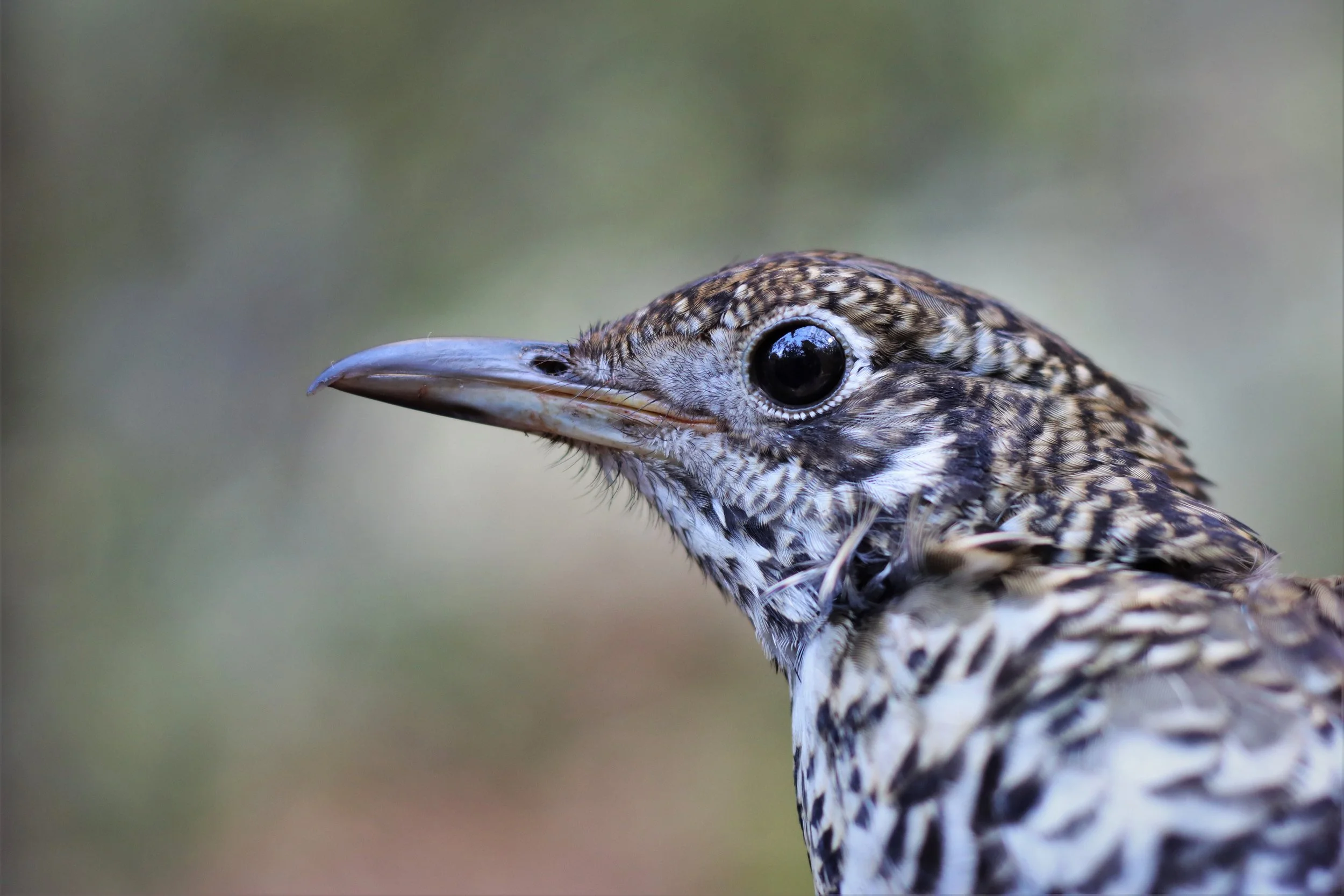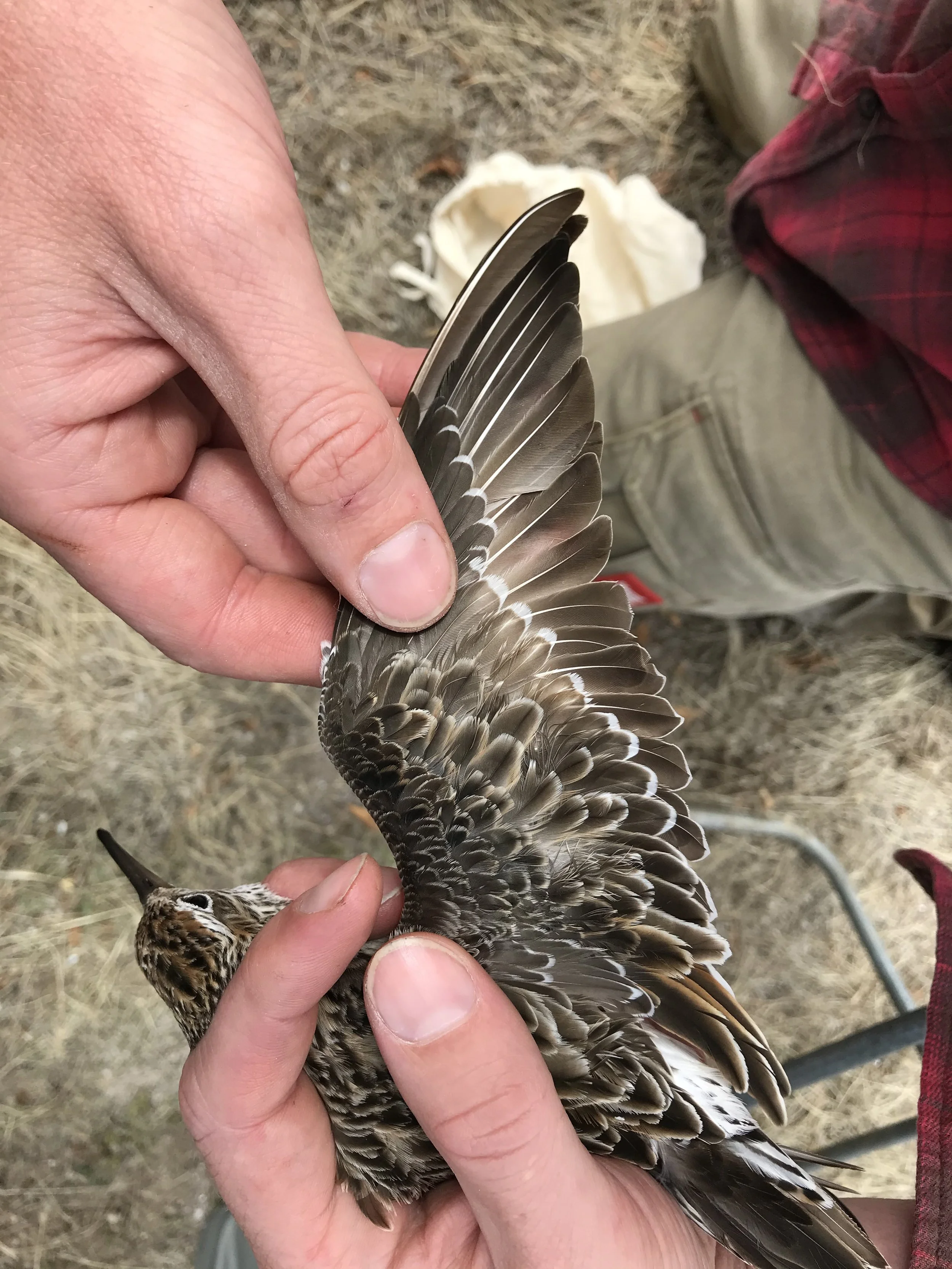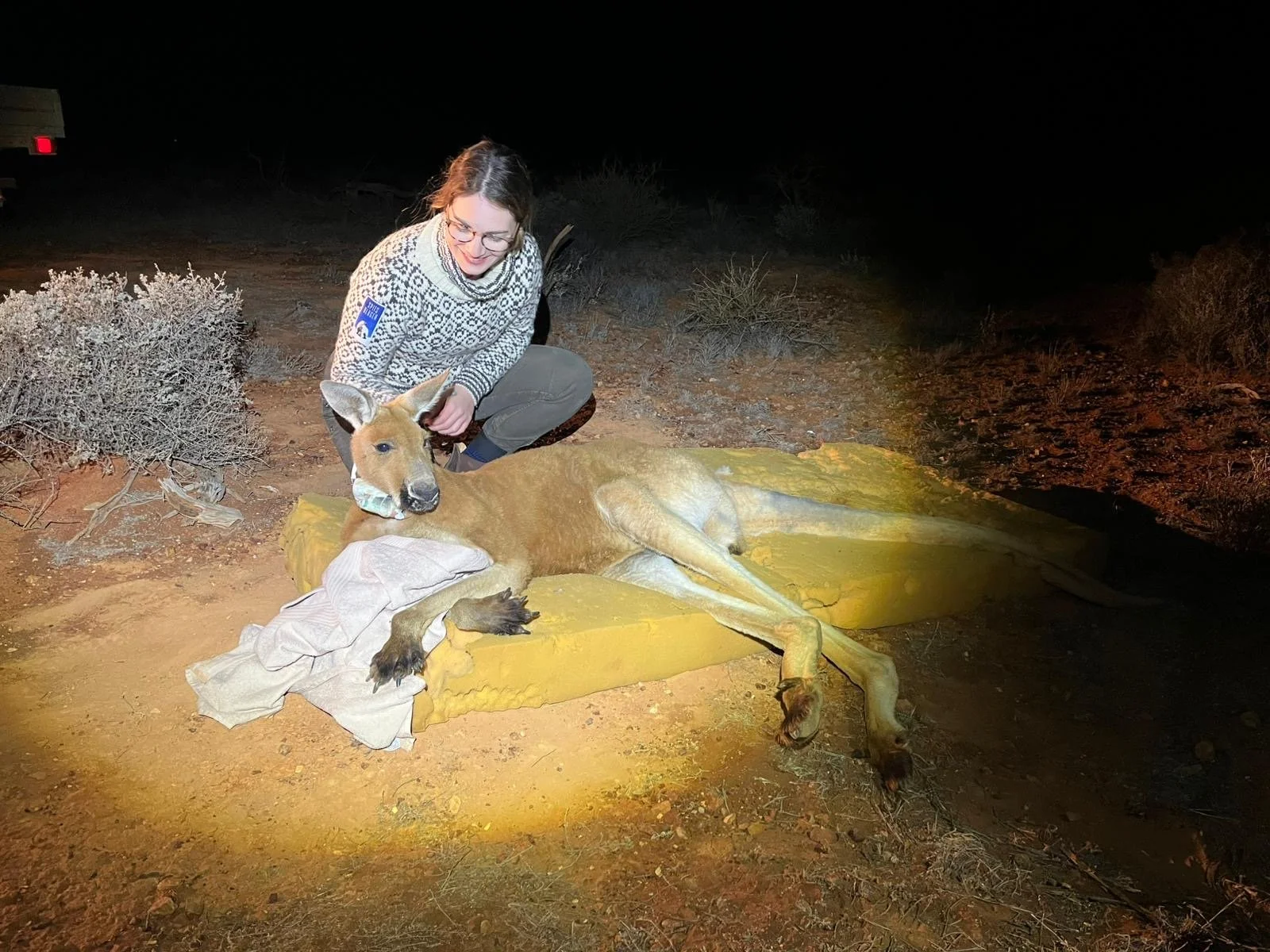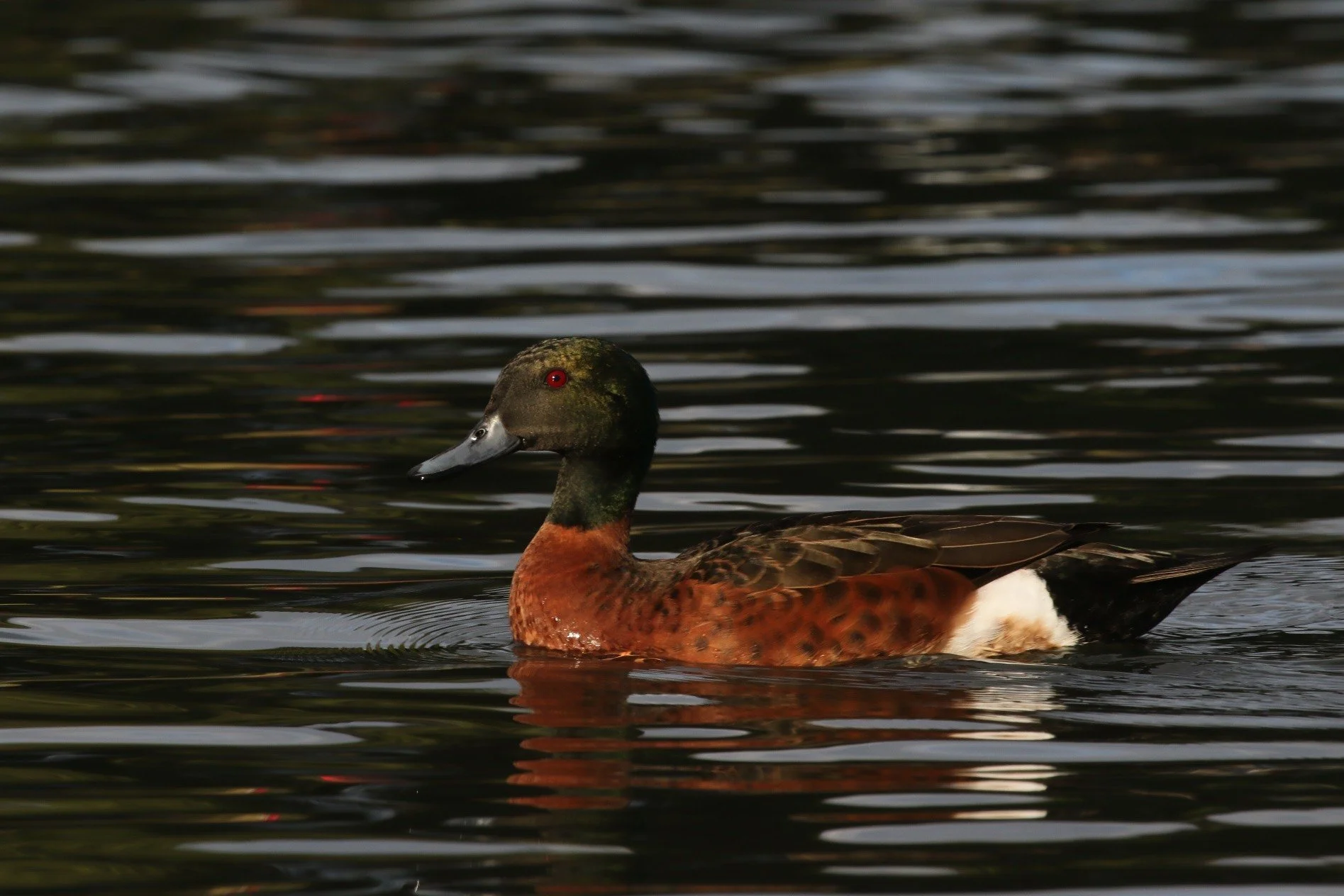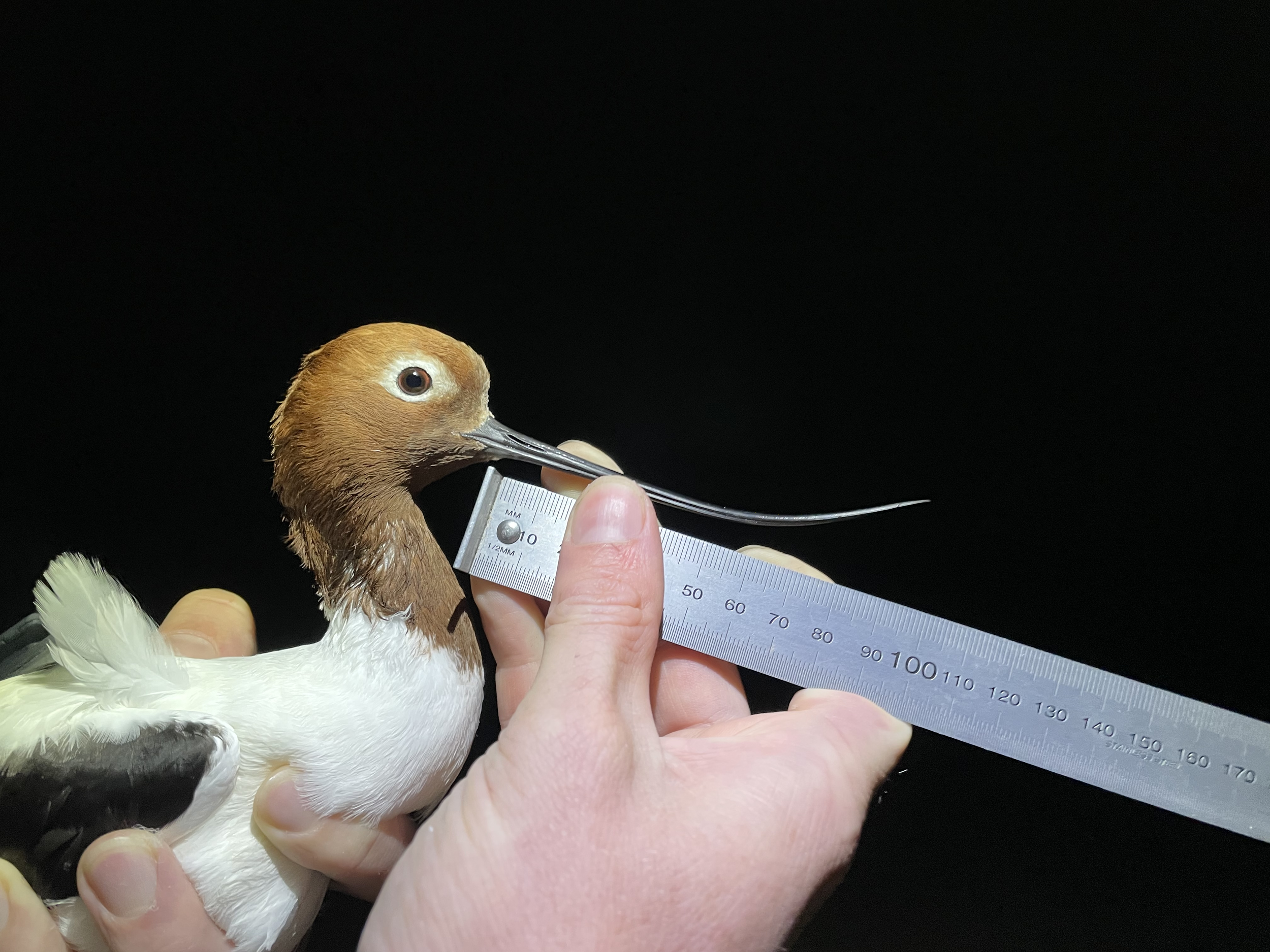
Our Research.
Our research investigates the processes influencing wild populations including survival, reproduction, dispersal, genetics, disease, harvesting, natural environmental variation and climate change. We use a mixture of field studies (e.g., capture-mark-recapture monitoring, animal tracking through GPS and PIT technology, eDNA-based diet analysis) and models to address applied questions in conservation biology and wildlife management.
Woodland birds of the Mount Lofty Ranges
The Mount Lofty Ranges (MLR) are a hotspot of temperate biodiversity with national significance. Although 90% of MLR woodlands have been cleared and 12 bird species have already become extinct, remnant vegetation in the MLR still provides an important refuge for woodland birds. Our past research shows that that the abundance of many large-bodied, aggressive and/or generalist birds is increasing in the MLR while many woodland-specialist species are declining. Woodland bird recovery in the MLR requires significant revegetation to increase the area and connectivity of suitable habitat. Our current research is focused on understanding which revegetation strategies work best to support declining bird species and the link between vegetation condition and bird community composition, and on developing new acoustic monitoring methods.
-
Kuhne, JG, O’Connor, PJ, Packer, JG & Prowse, TAA (2024) Quantifying environmental drivers of vegetation condition in a temperate ecosystem can improve detection of management impacts. Ecological Indicators 168: 112783.
Prowse, TAA, O’Connor, PJ Collard, SJ, Peters, Kristian J & Possingham, HP (2021) Optimising monitoring for trend detection after 16 years of woodland-bird surveys. Journal of Applied Ecology 58: 1090–1100.
Prowse TAA, Collard SJ, Blackwood A, O’Connor PJ, Delean S, Barnes M, Cassey P & Possingham HP (2017) Prescribed burning impacts avian diversity and disadvantages woodland-specialist birds unless long-unburnt habitat is retained. Biological Conservation 25: 268-276.
Prowse TAA, O’Connor PJ, Collard SJ & Rogers DJ (2019) Eating away at protected areas: total grazing pressure is undermining public land conservation. Global Ecology and Conservation 20: e00754.
Waterbird and shorebird conservation in the Coorong, Lower Lakes and Murray Mouth Region
The diverse and abundant waterbird community of the Coorong, Lower Lakes and Murray Mouth Region (CLLMM) played a central role in the region’s listing as a Wetland of International Importance under the Ramsar Convention. The CLLMM is an important site for migratory shorebirds of the East Asian–Australasian Flyway. It provides foraging and breeding habitat for non-migratory waterbirds and acts as a habitat refuge for many species during drought conditions. The threatening processes impacting waterbirds that use the CLLMM operate at a range of scales from local (e.g. extreme salinity and eutrophication of the Coorong South Lagoon, feral predators, vehicle access) to regional (e.g. upstream water extraction and drought, terrestrialisation of wetlands in the broader network) and global (e.g. loss of staging habitat along the migratory flyway).
Our current research project, funded through the Goyder Institute for Water Research, addresses four waterbird research priorities developed in collaboration with diverse stakeholders including First Nations and community groups, eNGOs, government agencies, and university-based scientists. Our specific objectives are:
(1) to study waterbird movement ecology at multiple scales to understand (a) how waterbirds select habitats for roosting, foraging and breeding as conditions change; (b) population connectivity across the broader wetland network; (c) triggers for long-distance movements; and (d) the impact of e-Water delivery on waterbird distributions.
(2) to quantify the impact of disturbance processes on the behaviour and reproductive success of beach-nesting shorebirds
(3) to develop species-specific conservation models for threatened and migratory species, and waterbirds with particular community significance
(4) to collaborate with community scientists to monitor waterbird body condition over space and time.
-
Mott, R., T. A. A. Prowse, M. V. Jackson, S. Sanchez-Gomez, A. T. D. Bennett, J. O’Connor, D. J. Rogers, J. D. Brookes, and P. Cassey. 2025. Red-necked avocets disperse at continental scales and breed following high rainfall in distant locations. Scientific Reports 15:16134.
Jackson, M. V., R. Mott, S. Delean, B. J. Hunt, J. D. Brookes, P. Cassey, and T. A. A. Prowse. 2024. Shorebird habitat selection and foraging behaviour have important implications for management at an internationally important non-breeding wetland. Ecological Solutions and Evidence 5:e12316.
Mott, R., T. A. A. Prowse, M. V. Jackson, D. J. Rogers, J. A. O'Connor, J. D. Brookes, and P. Cassey. 2023. Measuring habitat quality for waterbirds: A review. Ecology and Evolution 13.
Prowse, T., S. Delean, R. Mott, M. Jackson, B. Hunt, J. Brookes, and P. Cassey. 2022. Response models for key waterbird species of the Coorong. Goyder Institute for Water Research Technical Report Series No. 22/04.
Bat conservation and movement
Bats occupy most continents and habitats and provide essential ecosystem services including insect control, pollination and seed dispersal. Globally, approximately one quarter of all bat species are threatened. Our research to date has focused on the population ecology, movement and diet of two threatened bats in South Australia. First, our long-term monitoring of the critically endangered Southern Bent-wing Bat has used PIT tagging (“microchipping”) of more than 4,000 individuals to understand the survival rates and behaviour of different cohorts since 2016. Similarly, by using miniaturised “store-on-board” GPS trackers and eDNA-based dietary investigation, we are showing how and why bent-wing bats select habitats for foraging. Second, the grey-headed flying fox population is declining but also expanding to use new foraging habitat provided by humans. Grey-headed flying foxes that have recently established new colonies in the Adelaide region, and our research shows these bats are foraging broadly on native and introduced plants and have transported pathogens to our local area.
-
Bush, A., Lumsden, L. and Prowse, T.A., 2025. Flight height patterns of a critically endangered insectivorous bat, impacted by wind turbine collision. bioRxiv, pp.2025-05.
Bail, N.J., Lumsden, L.F., Reardon, T., van Harten, E., Clissold, P. and Prowse, T.A., 2025. Emergence and Return Times in a Colonial, Cave‐Dwelling Bat: Age and Sex Differences Driven by Reproductive Cycle. Ecology and evolution, 15(5), p.e71281.
Kuhne, J.G., Austin, J.J., Reardon, T.B. and Prowse, T.A., 2022. Diverse moth prey identified in the diet of the critically endangered southern bent-wing bat (Miniopterus orianae bassanii) using DNA metabarcoding of scats. Wildlife Research, 49(6), pp.571-582.
van Harten, E., Lawrence, R., Lumsden, L.F., Reardon, T. and Prowse, T.A., 2022. Novel passive detection approach reveals low breeding season survival and apparent lactation cost in a critically endangered cave bat. Scientific Reports, 12(1), p.7390.
Boardman, W.S., Roshier, D., Reardon, T., Burbidge, K., McKeown, A., Westcott, D.A., Caraguel, C.G. and Prowse, T.A., 2021. Spring foraging movements of an urban population of grey-headed flying foxes (Pteropus poliocephalus). Journal of Urban Ecology, 7(1), p.juaa034.
Boardman, W.S., Baker, M.L., Boyd, V., Crameri, G., Peck, G.R., Reardon, T., Smith, I.G., Caraguel, C.G. and Prowse, T.A., 2020. Seroprevalence of three paramyxoviruses; Hendra virus, Tioman virus, Cedar virus and a rhabdovirus, Australian bat lyssavirus, in a range expanding fruit bat, the Grey-headed flying fox (Pteropus poliocephalus). PloS one, 15(5), p.e0232339.
Ecology and conservation in the arid lands and rangelands
South Australia’s arid lands and rangelands are some of the earth’s habitats most untouched by modern human development. Our research in these landscapes has focused on the population and movement ecology of large vertebrates including dingoes and kangaroos. Through collaboration with Bush Heritage Australia, we are exploring the influence of human infrastructure (e.g., water points and fencing) on the movement and behaviour of red kangaroos in the arid zone.
-
Prowse TAA (2021) Spatial population models for red and western grey kangaroos in the South Australian rangelands. Report to the Department for Environment and Water, South Australia.
Tatler, J., Prowse, T.A., Roshier, D.A., Cairns, K.M. and Cassey, P., 2021. Phenotypic variation and promiscuity in a wild population of pure dingoes (Canis dingo). Journal of Zoological Systematics and Evolutionary Research, 59(1), pp.311-322.
Tatler, J., Prowse, T.A., Roshier, D.A., Allen, B.L. and Cassey, P., 2019. Resource pulses affect prey selection and reduce dietary diversity of dingoes in arid Australia. Mammal Review, 49(3), pp.263-275.
Prowse, T.A., Johnson, C.N., Cassey, P., Bradshaw, C.J. and Brook, B.W., 2015. Ecological and economic benefits to cattle rangelands of restoring an apex predator. Journal of Applied Ecology, 52(2), pp.455-466.
Sustainable population management and control of invasive or overabundant species
Our research has a strong focus on ensuring that populations of native wildlife are managed sustainably, and on improving and evaluating the impact of programs for controlling invasive or overabundant species. This work straddles the diverse fields of harvesting theory, demography, movement and dispersal, genetics, disease, and climate change. We are also conducting world-leading research into genetic biocontrols (gene drives) for controlling invasive vertebrate populations.
-
Prowse, T.A., Birand, A., Stephens, D. and Woolnough, A.P., 2025. Genetic Monitoring of a Lethal Control Programme for Wild Canids With Complex Mating Strategies. Molecular Ecology, 34(1), p.e17592.
Prowse TAA (2023) Conservation and sustainable-harvest models for game duck species. Report to the Victorian Department of Environment, Land, Water and Planning, 31 pages
Birand, A., Cassey, P., Ross, J.V., Russell, J.C., Thomas, P. and Prowse, T.A., 2022. Gene drives for vertebrate pest control: Realistic spatial modelling of eradication probabilities and times for island mouse populations. Molecular Ecology, 31(6), pp.1907-1923.
Prowse TAA, Delean S, Mott R, Jackson M, Hunt B, Brookes J, Cassey P (2022). Response models for key waterbird species of the Coorong. Goyder Institute for Water Research Technical Report Series No. 22/04.
Birand, A., Cassey, P., Ross, J.V., Thomas, P.Q. and Prowse, T.A., 2022. Scalability of genetic biocontrols for eradicating invasive alien mammals. NeoBiota, 74, pp.93-103.
Recent Publications.
-

Mott, R., Prowse, T.A., Jackson, M.V., Sanchez-Gomez, S., Bennett, A.T., O’Connor, J., Rogers, D.J., Brookes, J.D. and Cassey, P., 2025. Red-necked avocets disperse at continental scales and breed following high rainfall in distant locations. Scientific reports, 15(1), p.16134.
-
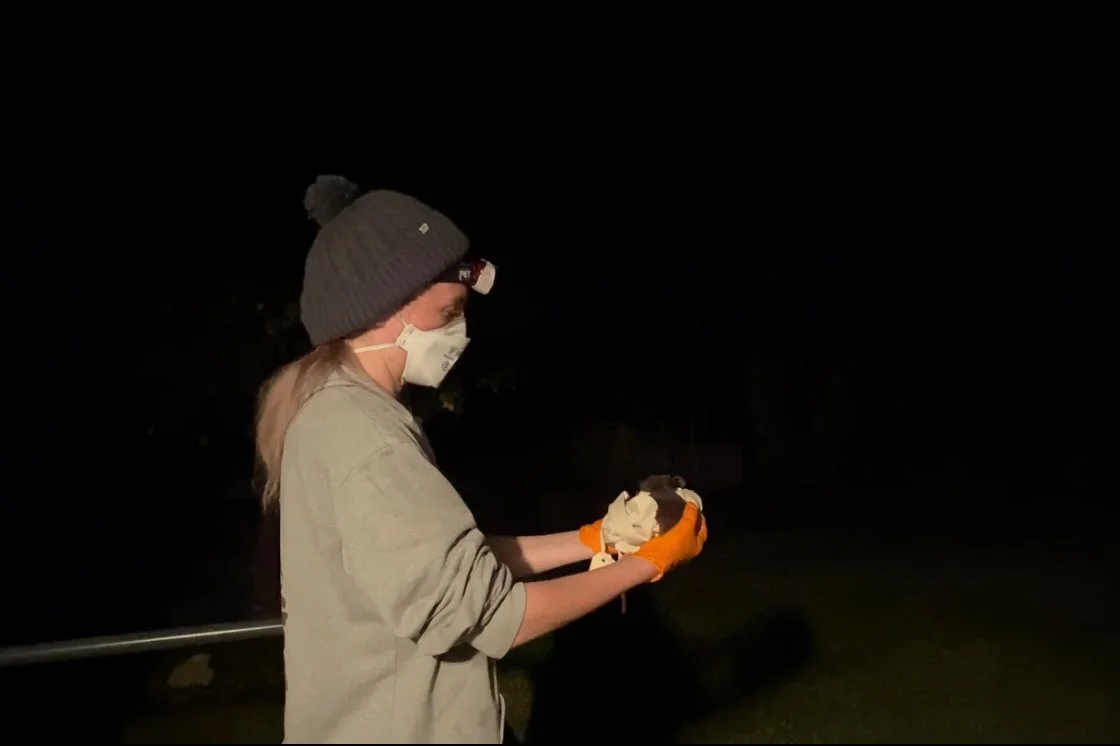
Bail, N.J., Lumsden, L.F., Reardon, T., van Harten, E., Clissold, P. and Prowse, T.A., 2025. Emergence and Return Times in a Colonial, Cave‐Dwelling Bat: Age and Sex Differences Driven by Reproductive Cycle. Ecology and evolution, 15(5), p.e71281.
-

Birand, A., Gierus, L., Prowse, T.A., Cassey, P. and Thomas, P.Q., 2025. Maximising Eradication Potential of Rat Gene Drives Using a Two‐Target Homing Rescue Strategy: Spatial Modelling of Empirical Data. Molecular Ecology, 34(10), p.e17777.
-

Bush, A., Lumsden, L. and Prowse, T.A., 2025. Flight height patterns of a critically endangered insectivorous bat, impacted by wind turbine collision. bioRxiv, pp.2025-05.
-

Prowse, T.A., Birand, A., Stephens, D. and Woolnough, A.P., 2025. Genetic Monitoring of a Lethal Control Programme for Wild Canids With Complex Mating Strategies. Molecular Ecology, 34(1), p.e17592.
-

Kuhne, J.G., O’Connor, P.J., Packer, J.G., Prowse, T.A., 2024. Quantifying environmental drivers of vegetation condition in a temperate ecosystem can improve detection of management impacts. Ecological Indicators, 168, p.112783.
-

Chekunov, S., Stringham, O., Toomes, A., Prowse, T. and Cassey, P., 2024. Scale of unregulated international trade in Australian reptiles and amphibians. Conservation Biology, 38(5), p.e14355.
-

Sewell, M.A., Prowse, T.A., Selvakumaraswamy, P. and Byrne, M., 2024. Larval development in the apodid sea cucumber Chiridota gigas, with a focus on coelom development and the serotonergic nervous system during metamorphosis. Invertebrate Biology, 143(2), p.e12433.
-

Jackson, M.V., Mott, R., Delean, S., Hunt, B.J., Brookes, J.D., Cassey, P. and Prowse, T.A., 2024. Shorebird habitat selection and foraging behaviour have important implications for management at an internationally important non‐breeding wetland. Ecological Solutions and Evidence, 5(1), p.e12316.
-
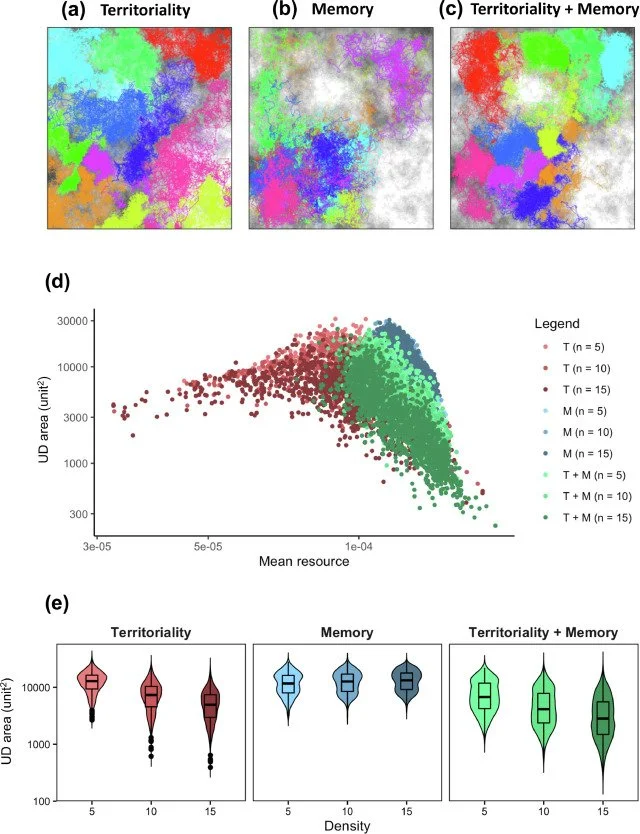
Theng, M., Prowse, T.A., Delean, S., Cassey, P. and Bracis, C., 2024. Integrating resource memory and cue-based territoriality to simulate movement dynamics: a process-explicit and pattern-oriented approach. Ecological Modelling, 487, p.110560.
